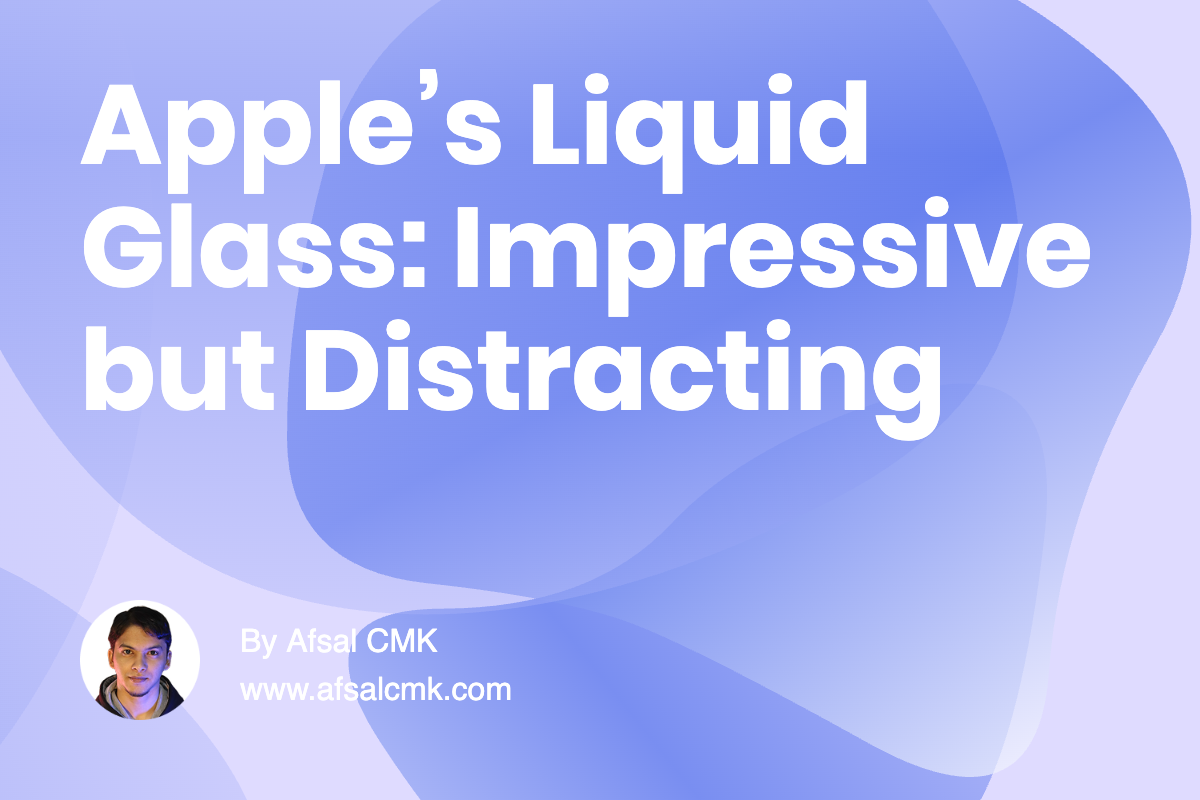
Apple’s Liquid Glass: Impressive but Distracting
Apple’s new liquid glass UI is unlike anything else we’ve seen in mainstream design. It brings a real-world physicality to digital screens-textures that feel alive, refractions that shift as you move, and a sense of depth that makes glass look like glass. On the surface, it’s undeniably impressive. But as someone who spends every day thinking about usability, I couldn’t help noticing the cost that comes with this kind of innovation.
For users, beauty isn’t always the same as clarity. The shimmering refractions and layers of polish add cognitive load. Instead of helping you find what matters, they sometimes pull your attention in multiple directions at once. What should feel fluid starts to feel overwhelming. I personally felt this when trying to focus on simple actions-the background effects demanded more attention than the content itself.
For designers and developers, the challenge is even sharper. Liquid glass doesn’t just introduce a new aesthetic-it reshapes how we think about hierarchy, contrast, and even interaction models. Guidelines are still unclear, and every app has to decide how far to lean into the effect without sacrificing accessibility and ease of use. Until those patterns mature, the work feels experimental and uneven.
Here are a few trade-offs worth watching as this design language evolves:
- Accessibility can suffer when form outweighs function-especially for users with vision or cognitive differences.
- Consistency across apps may take years, leaving users adjusting to fragmented experiences.
- Developers face a steeper learning curve to implement visuals that meet performance and usability standards.
- Cognitive load increases when effects compete with content instead of supporting it.
The truth is, whether you like it or not, users are forced to adapt. Apple has the scale to make this design language a default, and that means millions of people will learn to live with it-warts and all. Some will love the novelty, others will quietly wish for something simpler. As designers, the lesson isn’t to copy blindly, but to observe carefully: which parts of this push visual design forward, and which create friction that could have been avoided?
Personally, I’m waiting to see how liquid glass evolves. Right now, it feels like an impressive showcase of what’s possible, but not yet what’s practical. If you’ve felt the same strain I did, remember-you’re not alone. Sometimes what looks magical on stage feels heavy in real use. That’s the gap good design still has to close.